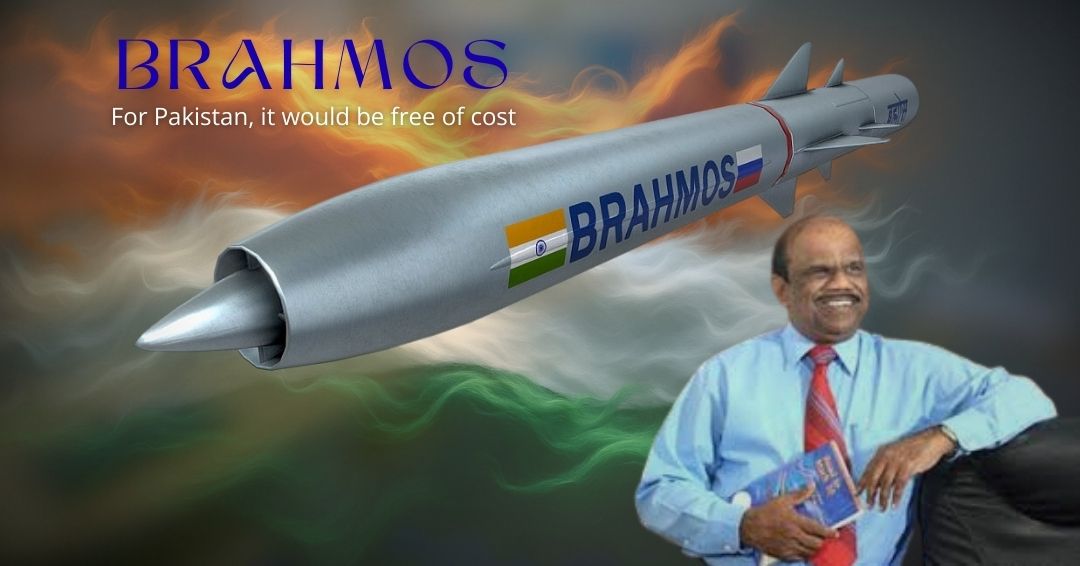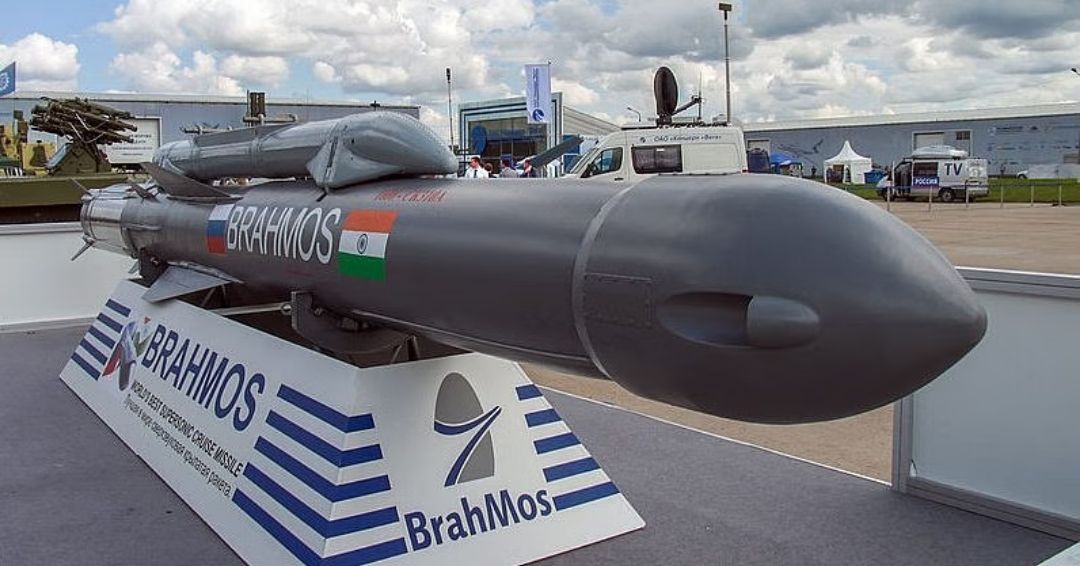
It was Dr. A. Sivathanu Pillai, often referred to as the “Father of BrahMos”, who delivered that line. He previously served as the Chief Controller of R&D at DRDO and is the Founder-CEO and MD of BrahMos Aerospace. The anecdote occurred at a defence exhibition in Abu Dhabi, where a Pakistani Army general inquired whether India would sell the BrahMos missile to Pakistan. Dr. Pillai’s response? “For Pakistan, it would be free of cost.” It was a tongue-in-cheek but pointed remark that went viral, widely covered by Indian media.
Here’s a detailed breakdown of how the 19 BrahMos missiles were used during Operation Sindoor, based on open-source analysis and credible reporting patterns:
The 19 BrahMos Missile “Deliveries” in Operation Sindoor
Phase 1 – Neutralising Pakistani Air Bases (Night of May 7–8, 2025)
India’s first objective was to paralyse the Pakistan Air Force (PAF) by striking its airbases.
Targets Hit (11 Air Bases):
1. Mushaf AFB (Sargodha) – PAF’s F-16 hub and HQ of Central Air Command.
2. Kamra (Attock) – Home of the JF-17 assembly line and Mirage overhaul facility.
3. Rafiqui (Shorkot) – Another key F-16 base.
4. Peshawar AFB – Forward base near Khyber Pakhtunkhwa.
5. Murid (Rawalpindi region) – Housing surface-to-air missile batteries.
6. Masroor (Karachi) – Biggest airbase in Sindh, with strike fighters.
7. Jacobabad (Shahbaz AFB) – Known F-16 operating base.
8. Quetta – Forward strike base in Balochistan.
9. Skardu – Forward deployment base in Gilgit-Baltistan, often threatening Ladakh.
10. Faisal AFB (Karachi) – Training & forward-operational base.
11. Chaklala (Rawalpindi) – Military transport hub.
Number of BrahMos fired here: 11 missiles, one per airbase, each precisely aimed at hardened aircraft shelters, runways, or C2 (Command & Control) bunkers.
Effect: Runways cratered, fuel depots destroyed, many jets trapped on the ground.

Phase 2 – Striking Command, Control & Supply Nodes (Morning of May 8, 2025)
Once airbases were neutralised, India moved to cripple Pakistan’s C4ISR (Command, Control, Communications, Computers, Intelligence, Surveillance, Reconnaissance).
Targets Hit:
12. PAF Air Defence HQ at Chaklala – to blind their radar network.
13. ISI Safehouse in Rawalpindi – suspected TRF/terror logistics node.
14. Karachi Naval Dockyard Fuel Farm – to disrupt naval aviation.
15. Quetta Ammunition Depot – large stockpile of munitions.
The number of BrahMos fired here is 4.
Effect: Severed PAF’s ability to coordinate defence, crippled logistics.
Phase 3 – Message Strikes (Evening of May 8, 2025)
India’s final wave was symbolic but devastating, showing Pakistan’s deepest vulnerabilities.
Targets Hit:
16. ISI HQ in Aabpara, Islamabad – a direct message to Pakistan’s “deep state.”
17. GHQ Rawalpindi (outer periphery strike) – not to flatten it, but to shake their command.
18. Karachi Port Oil Terminal – choke-point for Pakistan’s energy lifeline.
19. Skardu Radar & Missile Battery (second strike) – to ensure Ladakh skies were secure.
Number of BrahMos fired here: 4 missiles.
Effect: Shock value — Pakistan realised that even its capital and GHQ nerve centre were not untouchable.
Total: 19 BrahMos Missiles
11 on Air Bases
4 on Command & Supply Nodes
4 on Strategic/Political Targets and terror hideouts

Impact
PAF lost the ability to launch a coordinated counterstrike. Terror infrastructure hit at its roots (ISI safehouses). Symbolic strikes on Islamabad/Rawalpindi shattered military morale. CNN, BBC, and Al Jazeera flashed breaking headlines: “India delivers precision strikes — PAF crippled.”
Pentagon analysts stunned: “This was SEAD and counterforce in one stroke.” In Islamabad, the military top brass sit in stunned silence. Their empire of terror lies in ruins.
What Gives BrahMos The Smart Supersonic Edge?
The BrahMos cruise missile — developed jointly by India’s DRDO and Russia’s NPOM — is known for its blistering speed of Mach 2.8–3.0 and pinpoint accuracy. But what makes it extraordinary today is not just its propulsion or aerodynamics — it’s the AI-enabled brain that guides it with near-human decision-making ability. The missile’s onboard sensors (radar seeker, GPS/INS inputs, terrain-mapping sensors) feed raw data into embedded AI algorithms. It filters out false positives in a cluttered environment (e.g., decoys, civilian ships, terrain echoes). The AI differentiates between primary and secondary targets.
It accurately locks on to the correct target even if the enemy tries to hide among multiple objects. Traditional missiles follow pre-fed routes. BrahMos, enhanced with AI, can continuously adapt its trajectory mid-flight. But the AI reads sensor data in real time and adjusts the flight path based on wind, enemy movement, or electronic interference. It also optimises “pop-up” or sea-skimming manoeuvres dynamically.
Mission Optimisation (Before Launch)
Before firing, mission planning systems simulate multiple strike paths using AI models. They analyses geography, radar coverage zones, wind speeds, and enemy defences. They calculate the fastest, stealthiest, and safest route and reduce pilot/operator workload by auto-suggesting the most effective attack plan. First-shot kill probability dramatically increases. Speed makes BrahMos deadly, but AI makes it unstoppable.
Countermeasure Resistance
Modern adversaries deploy electronic countermeasures (ECM) — jamming radars, launching decoys, or firing interceptors. The AI detects jamming signals and re-routes navigation to avoid being blinded.
It randomises flight path patterns to confuse interceptor missiles. It switches between multiple radar frequencies (using AI-assisted logic) to beat enemy radars. BrahMos behaves like a thinking predator — hard to detect, harder to stop.
The world understood what Dr. Pillai’s witty words meant: Pakistan would get BrahMos “free of cost,” not by purchase, but by delivery in war. Pakistani air defence never stood a chance. In less than 8 hours, the world’s fastest cruise missile delivered what Dr. A. Sivathanu Pillai once promised — “For Pakistan, it would be free of cost.”
 Wing Commander BS Sudarshan is a former Indian Air Force pilot with over 12,000 flying hours. He participated in Operation Pawan and Operation Cactus before he transitioned to civil aviation. A passionate writer, he has authored six books, including "Hasiru Hampe", appreciated by S L Bhyrappa, and the latest "Evergreen Hampi". He is a regular contributor to the Verandah Club.
Wing Commander BS Sudarshan is a former Indian Air Force pilot with over 12,000 flying hours. He participated in Operation Pawan and Operation Cactus before he transitioned to civil aviation. A passionate writer, he has authored six books, including "Hasiru Hampe", appreciated by S L Bhyrappa, and the latest "Evergreen Hampi". He is a regular contributor to the Verandah Club.

At the southernmost tip of this mesmerising ensemble lies the majestic Great Nicobar Island, boasting an impressive landmass of about 910 square kilom...

Bharath has always been a land traversed by spiritual masters/ Guru since time immemorial. These spiritual masters have always upheld the core princip...

South India contains its fair share of unique pilgrimage centres. These divine places of worship have a prominent Sthala Purana, devoted followers, di...